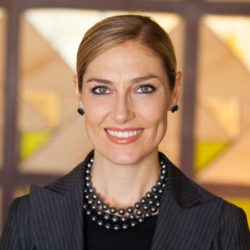
Working remotely: Balancing blended roles and competing demands
Working remotely during the pandemic has blurred the line for many people between work and home life. Homes have become our workspaces, our classrooms, and our only recreation spaces. At the same time, many of us are finding our professional identities are overlapping with personal roles, such as being a spouse or parent, or providing support to ageing family members, either in the home or at a distance.

Cecile Le Roux
Cecile le Roux is an assistant teaching professor of organization and behavior at Carnegie Mellon University in Qatar (CMU-Q), a Qatar Foundation partner university. An expert on working more effectively, she shares how people can find balance – or harmony – as they adjust to the new reality of blended roles.
Coping with blended roles
Working from home in an era of social distancing is challenging. Many people are asked to be a professional, as well as a parent, a spouse, and a teacher, all within the same space and often at the same time. Combining these roles creates a steep learning curve as we find ways to manage multiple identities.
“The learning is incremental. Try to be present in the moment and make sure that you are clear about your basic priorities,” she says. “You will slowly figure out how to focus on what is most important and how to distribute work or tasks so others in the work team and in the home can help. You don’t have to take on everything alone.”
She suggests that other practical techniques, such as having a designated workspace, creating a routine, wearing clothes to inhabit a role, or switching on and off your devices at certain times, can make a difference. While these can be challenging, having such intentions and working towards them can be helpful.
Staying flexible
Le Roux suggests keeping the communication lines open with work colleagues and family as you figure out what you need and how you can get the work accomplished.
“As we educate ourselves about balancing roles, we also need to educate those close to us. It will help ease competing demands if you can, perhaps, take breaks at different times and teach those around you about when you are available. A friendly sticky note on the door, or other symbolic signs, can tell your kids you’re working and there should be ‘no entry’ or no interruptions at these times.”
She also suggests remaining open to unconventional solutions. Sometimes blended roles will mean that children need a parent during designated work times. That may require flexibility, like having to work longer at night when the children are asleep.
Le Roux notes that while leading experts have predicted working from home for some industries for some time, this has now become a sudden reality. Read about and find inspiration from others who have been successful with this mode of working, including extreme roles, such as astronauts who work while being socially distant for extended periods of time.
Reevaluating expectations
Le Roux notes that work output and expectations might shift as people adjust to blended roles. “If you don’t get to every task on your to-do list, rather than mark it as a failure, it may help to reevaluate expectations. Do we still have the same capacity as before we were working remotely? How realistic we are about our demands? That applies to what we expect from ourselves and from others.”
As we reevaluate our expectations, Le Roux encourages people to exercise both compassion and self-compassion. While these are tools we only occasionally use in the workplace, the extraordinary circumstances of the pandemic are an excellent opportunity to practice them.
Staying well
Along with the change of remote working and taking on blended roles, the pandemic also evokes worry about loved ones or colleagues, anxiety about the future, and grief about what we have lost or could be losing. Le Roux encourages everyone, especially those in blended roles, to take time daily for self-care.
“At times, we need to acknowledge and process our more challenging – yet very valuable – emotions. We should move and exercise, as well as have fun by including play, creativity, music, or other active approaches that induce positive emotions. Mindfulness practices help us to slow down, be present, and reconnect with ourselves. Meditation, scriptures, or other sources of inspiration help us be more methodical, conscious, and intentional about who we are and what we do,” she suggests.
“The more perceptive and reflective we are, the more we will be able to be efficient and effective with all of our roles, both professional and personal.”
Le Roux encourages people to reach out for professional help and guidance if they find themselves overwhelmed. “During times of uncertainty and transition, we can expect changes in our behavior; however, if these changes are pervasive and you are, for instance, more irritated than usual or not able to sleep, and this continues for more than two weeks, consider reaching out to a professional. There are many resources where people can get support.”
